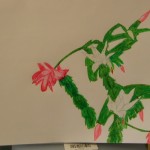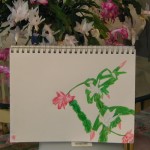HOLIDAY FUN AND STRESS RELIEF: FREE PERSONALITY TESTS, 12-STEP HELP WITH ADDICTIONS AND CODEPENDENCY, GRIEF WORK
Complete Focusing Instructions Manual (17 pages)
“Ajas” Instantaneos Mini-Manual
CREATIVE EDGE FOCUSING(tm) SELF-HELP SKILLS FOR HOME AND WORK
Creative Edge Focusing (www.cefocusing.com ) teaches two basic self-help skills, Intuitive Focusing and Focused Listening, which can be applied at home and at work through The Creative Edge Focusing Pyramid.
Based upon Gendlin’s Experiential Focusing (www.focusing.org ) and Rogers’ Empathic Listening, our website is packed with Free Resources. Meet some of them below as we give suggestions for surviving and enjoying the holidays.
FREE PERSONALITY TESTS FOR FUN WITH FAMILY
Got some extra time on your hands? Family and friends to entertain? You could spend some time in the Individual Differences: Personality Tests section at Creative Edge Focusing’s website. You’ll find websites offering free and fun versions of the Myers-Briggs Type Indicator, Keirsey Temperament Sorter, Enneagram, Gardner’s Multiple Intelligences, and info on EQ, the business version of Goleman’s Emotional Intelligence. Play around with several tests. Compare among family members. Of course, these are free versions, for fun. It is more important to think about yourself and others from a variety of perspectives, “shake up” fixed images, than to put anyone in a “box.”
HELP WITH HOLIDAY ADDICTIONS OR CODEPENDENCY?
Unfortunately, the holidays can also stir up alcohol addiction and codependency as families gather. See Recovery Focusing by Suzanne Noel for a gentle combination of Focusing with the 12-Step Programs.
HOLIDAYS INCLUDE GRIEVING WHAT IS MISSING
The holidays can also include some grieving for what or who is missing. Take the opportunity to use these moments to discover“The Meaning in Tears” and to allow yourself to notice “Being Touched and Being Moved: The Spiritual Value of Tears” . Try out the simple Five Minute Grieving: What To Do If A Friend, Colleague, Loved One Starts Crying” .
CREATIVE EDGE FOCUSING ™ INSTANT “AHAH!” E-COURSE
For four weeks, we practice one Instant “Ahah!,”, one Relaxation Exercise, and one Getting A Felt Sense Exercise, with e-reminders and tips each week. Our purpose:Helping you incorporate Listening and Focusing into your everyday life. Subscribe here.
INTIMACY, SEXUALITY, CREATIVITY, SPIRITUALITY
You might want to try Instant “Ahah!” #8 Sharing Your Day: Instant Intimacy as a simple way to get and stay connected with your significant other, regardless of surrounding turmoil. Here is a mini-course on Intimacy and Sexuality if you want to spend special time over the holidays.
You might want to try Instant “Ahah!” #9 Focusing on Creativity: From Blocks To Predictable “Ahah!”s or #10 Focusing on Spirituality: Being Touched and Being Moved. Read about Focusing and Creativity and Focusing and Spirituality
E-Newsletter Archives Now Available!
Anyone can also access the e-newsletter archives from the Free Resources submenu at Creative Edge Focusing.
AND USE THE CREATIVE EDGE PRACTICE E-GROUP FOR SUPPORT DURING THE BREAK
The Creative Edge Practice e-group for actual practice and demonstrations of Listening/Focusing is becoming a wonderful place for tender reflection, space for Focusing any time of day or night (knowing it may be some hours before you get a response), with the knowledge of a warm, Listening space out there, and interesting discussions about what we learn during the turns.
Please join us if you want company over the break! See instructions below.
Two E-Groups, Creative Edge Practice and Creative Edge Collaboration
In order to increase safety, and hopefully participation, there are now two separate Yahoo e-groups.
Creative Edge Practice is a closed group, where people can feel safe for the vulnerability of sharing Focusing experiences and responding to others with Focused Listening responses. The only requirement: a willingness to introduce yourself upon entry into the group, so everyone knows who is in the group. Further active participation is welcomed but not required.
Creative Edge Collaboration is an open group for discussion and networking around projects related to the spread of listening/focusing to various audiences and throughout the world.
You can visit the homepage of each by clicking on the link and join from there as well. You can choose “emails only” and do not have to start a yahoo account, although accounts are free.
SELF-HELP PACKAGE: MANUAL, CDS, DVD DEMONSTRATIONS
If you order the Self-Help Package, you can use the Intuitive Focusing CD to follow Dr. McGuire as she speaks these exercises and view four actual Listening/Focusing Partnership sessions on DVD.
THE GIFT OF INNER SERENITY: FORWARD THIS EMAIL TO FRIENDS, COLLEAGUES, FAMILY
Happy holiday, trusting in the wisdom of your body!
You can try out “Focusing: Find Out What Is Bothering You.”
Click here for a free Intuitive Focusing Mini-Course
Click here for a free Focused Listening Mini-Course
See Core Concept: Conflict Resolution to find a complete mini-course on Interpersonal Focusing and Conflict Resolution, including Rosenberg’s Non-Violent Communication, Blanchard’s “One Minute Apology,” Patricia Evan’s books on Verbally Abuse and Controlling Relationships, McMahon’s Beyond The Myth Of Dominance, and much more.
See Core Concept: Intimate Relationship to find a complete mini-course on increasing intimacy and sexuality, including the “Sharing Your Day” exercise, Listening/Focusing Partnerships for The Way of Relationship, untangling and equalizing desire, tantric sexuality, and much more.
Download complete Instant “Ahah!” Mini-Manual, in English and Spanish, from CEF Website, or download from links at top of this blog.
Find links to free articles, personality tests, multi-media Self-Help training, Classes and workshops
Dr. Kathy McGuire, Director


